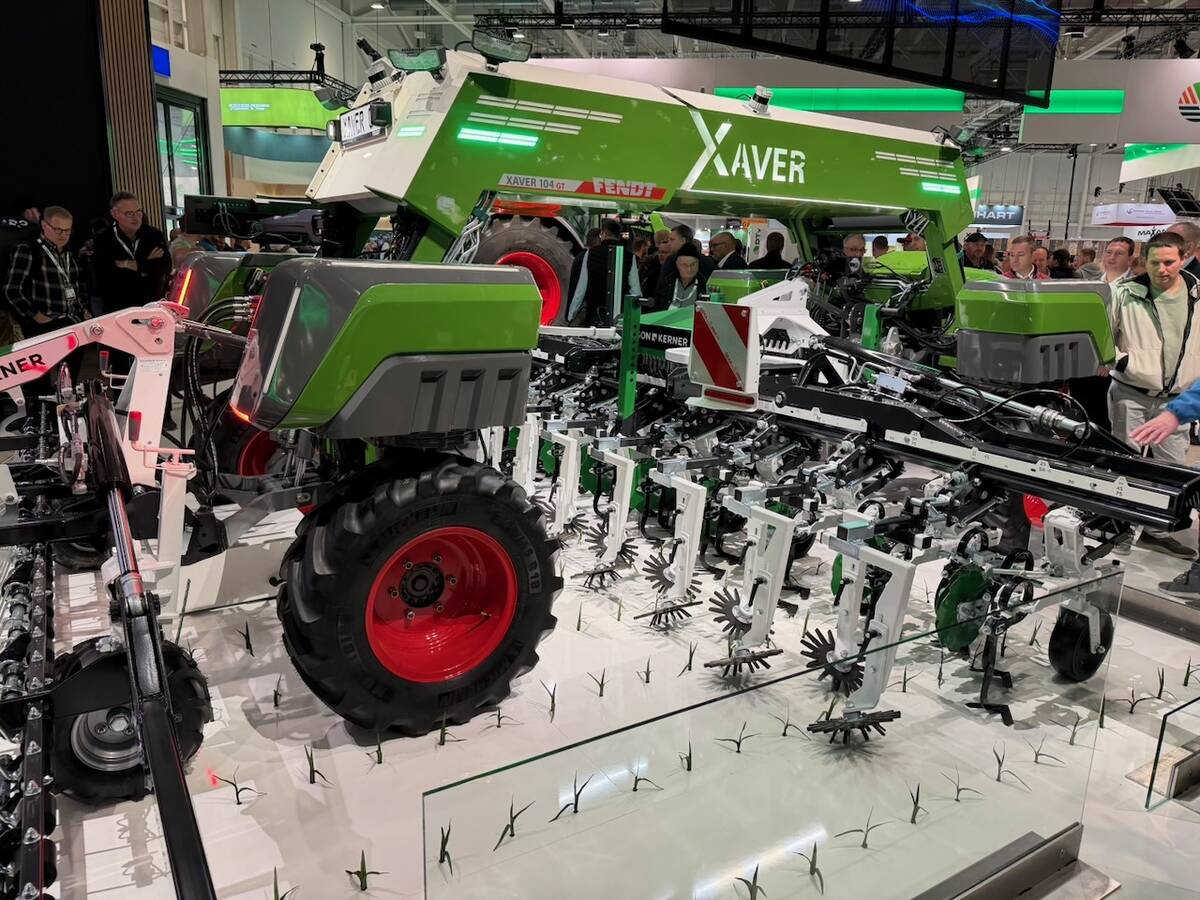If farmers think it’s hard to spread manure in Canada, imagine what it’s like in Europe.
Western Europe is bulging with massive urban populations that cover much of the landscape. Huge livestock industries vie with these centres for land on which to spread manure and human waste sewage.
As well, ever-tightening European Union rules make spreading increasingly difficult, to the point that many crop farmers don’t think it’s worth their while to accept tiny amounts of manure.
“The lower rates are becoming standard and in many cases it is not cost effective to travel with a couple of tonnes per hectare,” says University of Manitoba engineering professor and sludge expert Jan Oleszkiewicz. “That’s not cost effective. It’s just like sprinkling a little bit here and there and not giving the farmer any real benefit.”
Read Also

VIDEO: Agritechnica Day 4: Robots and more robots, Nexat loves Canada and the trouble with tariffs
Agritechnica Day 4: Robots and more robots, Nexat loves Canada and the trouble with tariffs.
Europe’s human density rates are much higher than in North America but that hasn’t discouraged livestock producers. For example, the Netherlands has massive populations of pigs and Belgium has large numbers of dairy cattle.
Oleszkiewicz’s presentation was organized by an engineering students’ association at the U of M and drew dozens of students and manure treatment specialists and officials from the university, the City of Winnipeg and the provincial government.
Organizers said the subject was popular because sewage issues are becoming an ever-greater concern for cities, while anything that affects river and lake water quality draws attention in Manitoba.
The problems involved in disposing of animal and human waste are exacerbated by EU regulations that require most human waste to be carefully composted to ensure the destruction of dangerous bacteria.
Then it must be spread only at low rates because of environmental concerns.
Farmers often find they receive too little nutrient value from the human sludge to justify spreading it on their land, Oleszkiewicz said.
That has caused many municipalities to incinerate waste instead of trying to spread it.
Some farmers in areas of heavy animal manure production transport their manure to centralized processing locations, where it is treated, separated, sometimes composted and then either spread or disposed of.
However, even with all the regulations limiting sludge and manure spreading, there is a major move in some countries to spread 100 percent of waste onto land rather than see it incinerated or dumped in landfills.
Oleszkiewicz said the competition is intense for land on which to spread livestock manure and human sludge, but farmers often win.
“In densely populated areas, usually sludge will lose to manure application, or other compost application.”
Some manure is solid, such as horse manure, straw from pig barns and some cattle manure, but most is liquid, which is easy to incorporate in farmland.
Oleszkiewicz said North America has nothing near Europe’s challenges getting rid of manure and human sludge.















